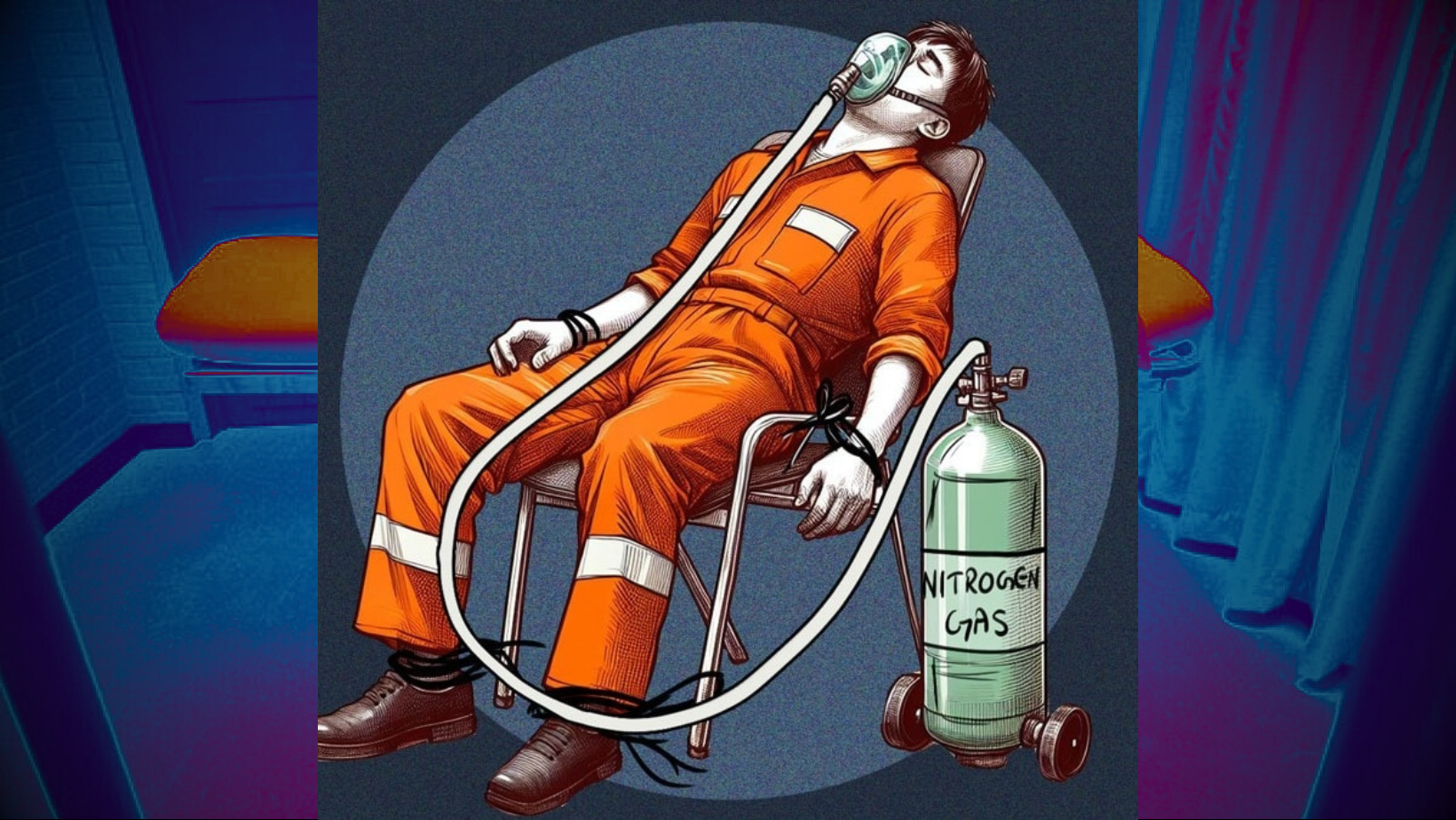Alabama in USA Carried Out the First Ever Execution Using Nitrogen Gas (Indian Express)

- 29 Jan 2024
Why is it in the News?
Alabama inmate Kenneth Smith was executed on January 25 by nitrogen hypoxia, marking the United States’ first execution using the method, and the first time in over four decades that a new method of execution was introduced since lethal injection was first used in 1982.
News Summary:
- An Alabama death row inmate has been put to death by nitrogen gas, in the first known execution of its kind in the US.
- His case marks the first known execution by nitrogen hypoxia, which his lawyers had argued amounted to a form of “cruel and unusual punishment”.
- Death by nitrogen gas is an untested procedure, and its opponents say it can cause unnecessary suffering.
- Kenneth Smith, 58, was a contract killer who had been on the death row since 1996.
What is Nitrogen Hypoxia?
- Nitrogen hypoxia is a style of execution wherein an inmate is made to inhale nitrogen instead of oxygen, leading to gradual asphyxiation.
- To achieve this, a respirator mask is placed over the head of the inmate on death row.
- While the air we breathe is made up of 80 per cent nitrogen, it exists in combination with oxygen, rendering the colourless, odourless gas harmless.
- However, if a person is deprived of oxygen and made to breathe in just nitrogen, the gas proves lethal.
- When a high concentration of nitrogen is inhaled, it replaces the oxygen in the body and disables the respiratory system, causing death.
Why Nitrogen Hypoxia?
- Nitrogen hypoxia is the first new method of execution to be introduced since 1982 when lethal injections began being used.
- The drug needed to administer lethal injections to inmates on death row became harder to access over time, pushing authorities to scout for alternatives.
- Further, there were reports of a surge in complications associated with the procedure as well.
- As of now, only three states in the United States have approved the use of nitrogen gas to execute death row inmates, namely, Alabama, Oklahoma, and Mississippi.
Is Nitrogen Hypoxia Ethical?
- There is little research regarding death by nitrogen hypoxia.
- When the State is considering using a novel form of execution that has never been attempted anywhere, the public has an interest in ensuring the State has researched the method adequately and established procedures to minimise the pain and suffering of the condemned person.
- The risks associated with this method of execution include the risks surrounding the chances of a gas leak if the mask is not secured well on the inmate.
- The law requires that this execution not be cruel.
Key facts about Nitrogen:
- The air around us, the atmosphere, is made up of about 78% nitrogen and only 21% oxygen.
- The rest comprises water vapour, argon, neon, helium, hydrogen and xenon.
- Those are known as "permanent gases".
- There is also a range of "variable gases" in the atmosphere.
- They include methane, ozone and carbon dioxide — with concentrations that can vary from day to day and region to region.
- At a concentration of 78% in the atmosphere, nitrogen is safe to breathe.
- But it grows dangerous and potentially fatal once levels of nitrogen reach 80% or more.
- Nitrogen has no odour, is tasteless, and colourless.
- Nitrogen gas is inert, but certain soil bacteria can "fix" nitrogen into a usable form for plants and animals.
- French chemist Antoine Laurent Lavoisier named nitrogen azote, meaning without life.
- Nitrogen was sometimes referred to as 'burnt' or 'dephlogisticated' air.
- Nitrogen compounds are found in foods, fertilizers, poisons, and explosives.
- It is responsible for the orange-red, blue-green, blue-violet, and deep violet colours of the aurora.
- Nitrogen has a valence of 3 or 5.
- Discovery: Scottish physician Daniel Rutherford in 1772
- Nitrogen is the fifth most abundant element in the universe.
